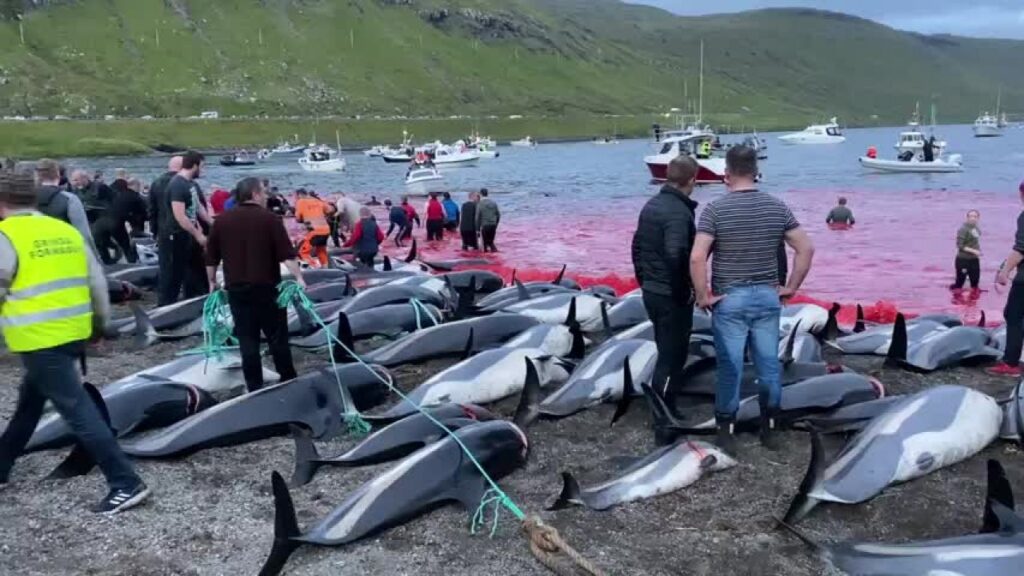
1. Faroe Islands Begin Whale Hunts
The Faroe Islands have begun a controversial and bloody whale hunt with dozens of pilot whales already having been killed this season. More than 60 pilot whales—the largest member of the dolphin family—were killed during two hunts that took place in the Atlantic Ocean off the Danish territory, between May 8 and May 15, Euro News reported. The whaling season in the Faroe Islands usually kicks off in the summer months but hunts can happen year round.
The hunt is a tradition that dates back around 1,200 years, when people would hunt dolphins and whales during times of famine. Several dolphin species, including pilot whales and white sided dolphins, are still killed each year for their blubber and meat. The Blue Planet Society has launched an online petition asking for an end to the hunting of dolphins and small whales.
Thank you for your generous gift that will help us continue the production of this weekly, free publication
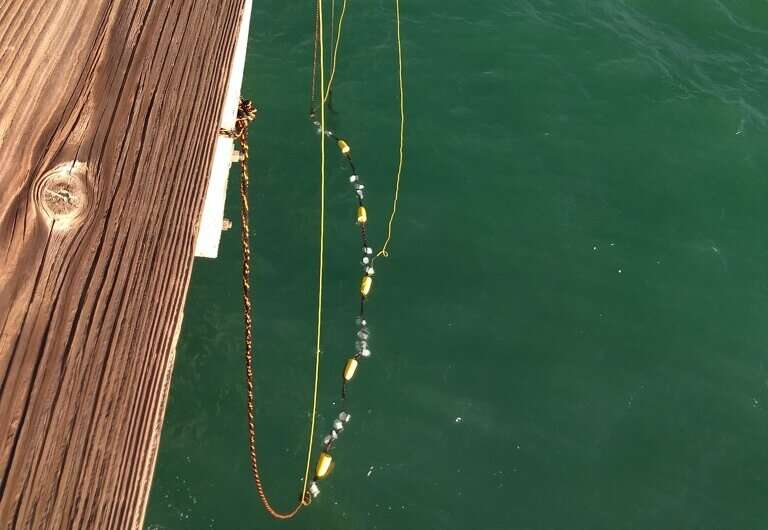
2. New Study: Bio-Based Plastic and Plastic-Blend Textiles Do Not Biodegrade in the Ocean
Plastic pollution is omnipresent in society, and while plastic bags, cups, and bottles may first come to mind, plastics are also increasingly used to make clothing, rugs, and other textiles. A study from UC San Diego’s Scripps Institution of Oceanography, published May 24 in the journal PLOS One, tracked the ability of natural, synthetic, and blended fabrics to biodegrade directly in the ocean. Lead author Sarah-Jeanne Royer conducted an experiment off the Ellen Browning Scripps Memorial Pier and found that natural and wood-based cellulose fabrics degraded within a month.
Synthetic textiles, including so-called compostable plastic materials like polylactic acid (PLA), and the synthetic portions of textile blends, showed no signs of degradation even after more than a year submerged in the ocean.Given these results, Royer and the team hope consumers will become more aware of the power of their own choices.
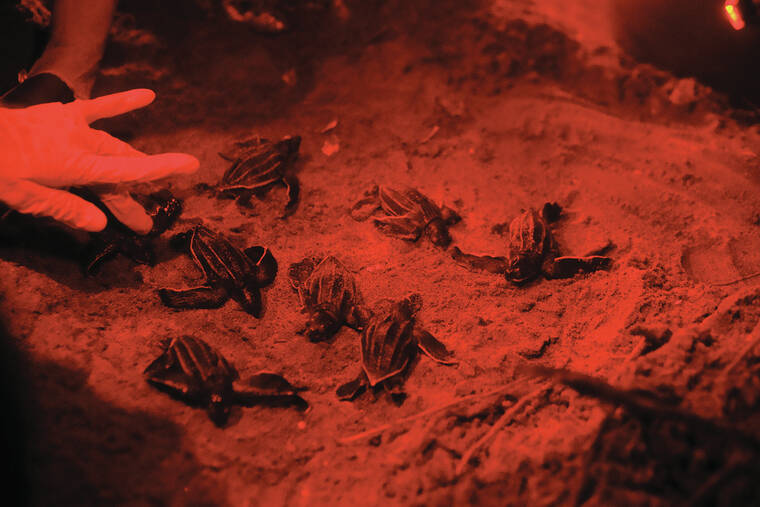
3. In Panama, Legal Rights Given to Sea Turtles, Boosting the ‘Rights of Nature’ Movement
On a Panamanian beach long after dark, a group of students dug into the sand to excavate a sea turtle nest, studying eggs, inventorying the success of the hatch and checking for any surviving hatchlings stuck at the bottom of the nest. Nearby, armed members of the National Border Service stood watch for protection in an area known for drug trafficking.
The students worked under the guidance of Callie Veelenturf, who founded a group that works to protect leatherback turtles and pushed for a new law in Panama that guarantees sea turtles the legal right to live and have free passage in a healthy environment. The law gives sea turtles the right to an environment free of pollution and other human impacts that cause physical or health damage, like climate change, incidental capture, coastal development and unregulated tourism.
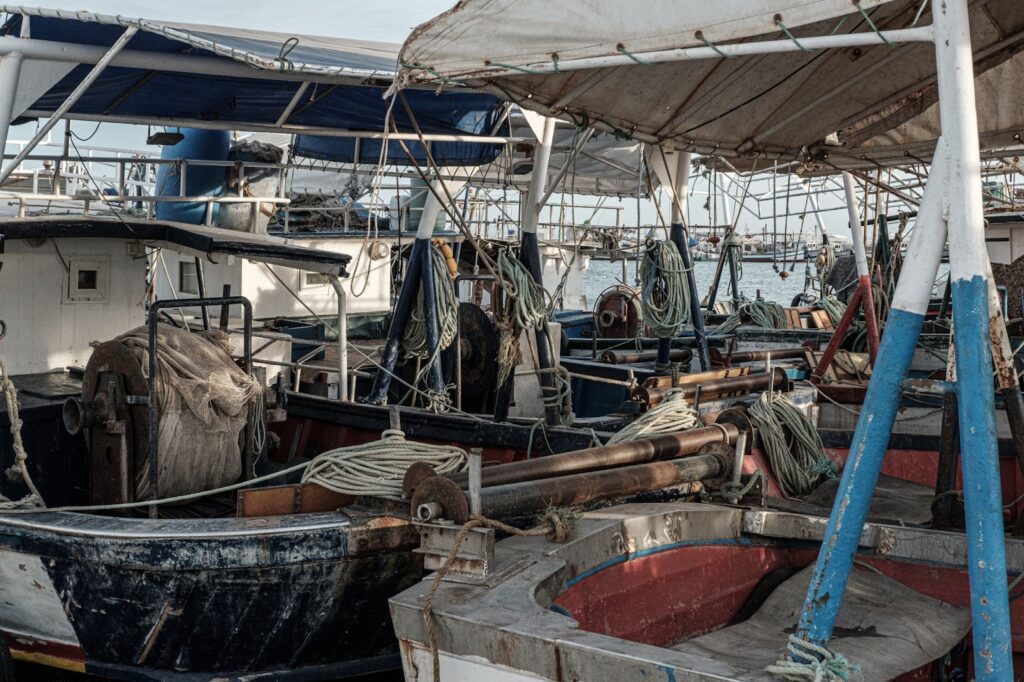
4. Tunisia: Illegal Destructive Bottom Trawling Uncovered
FishAct volunteers returned from Tunisia where they spent 11 days investigating illegal bottom trawling in the Gulf of Gabes. The investigation clearly uncovered the immense scale of the illegal fleet. This gulf along the Southern half of the Tunisian coastline, forms a unique ecological area due to its large shallow seas, the most important seagrass meadows in the Mediterranean sea, and some of the largest in the world.
These areas form important spawning and nurturing grounds for countless local and migratory species, such as marine turtles and shark species with critical conservation status. A seemingly endless number of ports and piers along hundreds of kilometers of coastline were visited, many of them on multiple occasions, to determine the scale of the illegal fleet. The team has come back with impressive results, which are being analyzed as we speak and will be published early next year.
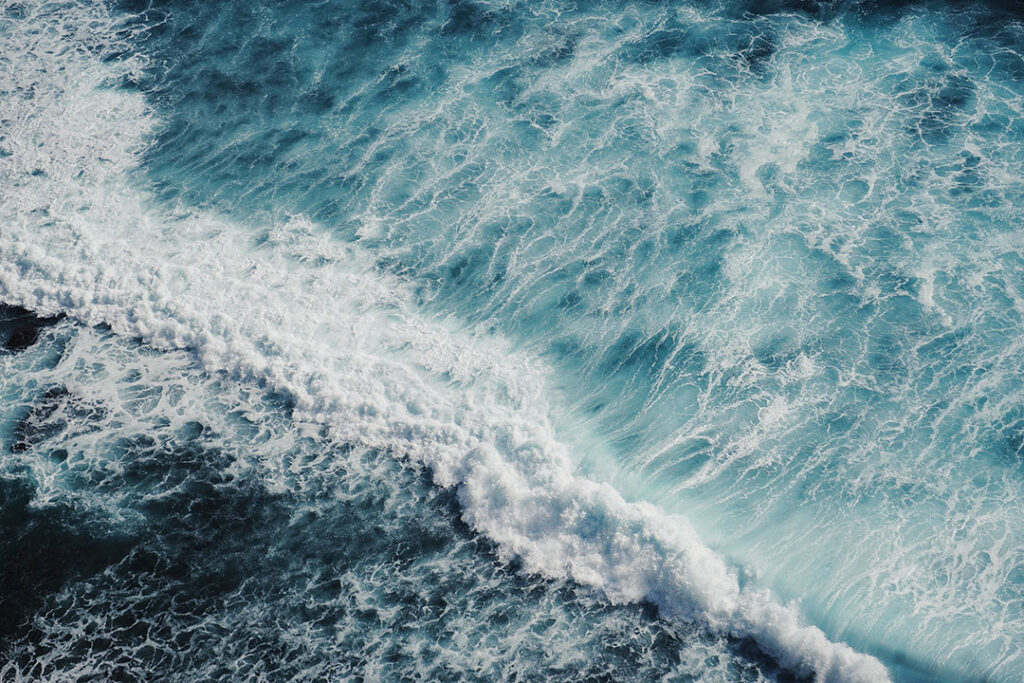
5. UN Ocean Conference Co-Chairs Solicit Input From Civil Society
The Co-Chairs of the Third UN Ocean Conference (UNOC) have invited inputs from civil society organizations (CSOs) to share feedback and expectations for the event. CSOs are invited to respond to “a call to all the voices of the ocean” by participating in a global consultation that is open until 15 June 2023. The Third UN Ocean Conference will convene in Nice, France, in June 2025. In June 2024, Costa Rica will host a stakeholder meeting.
The Co-Chairs emphasize that, drawing on the UNOC’s previous editions in 2017 and 2022 the Third UN Ocean Conference must generate transformative action and provide solutions the ocean needs, supported by ocean science and funding for SDG 14 (life below water) – “the two legs,” on which they propose the Conference “stand and walk towards a ‘Summit of Ocean Action.’”
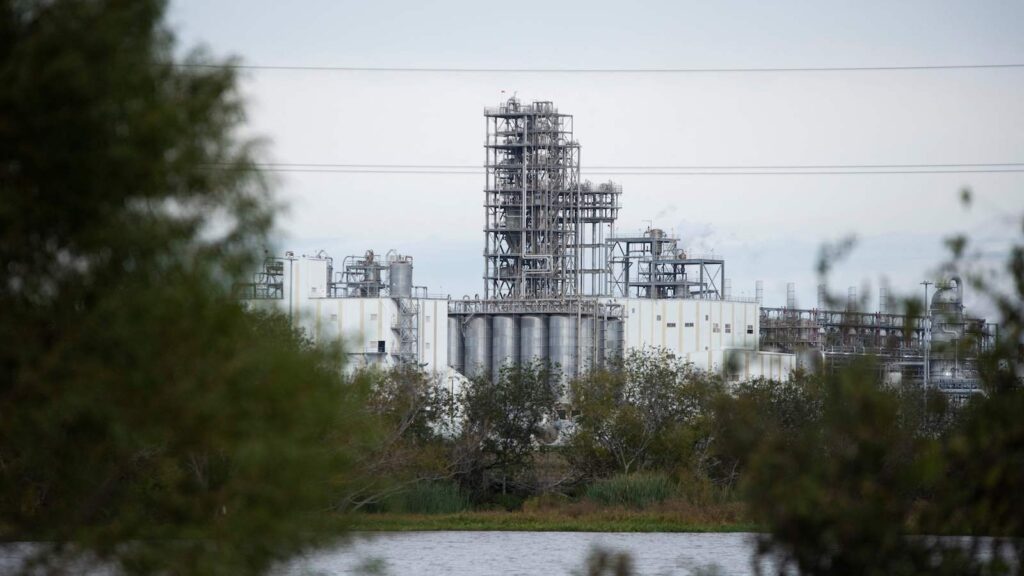
6. Plastic Bottles Harm Human Health at Every Stage of Life Cycle
In 1973, a DuPont engineer patented the PET plastic bottle — an innovative and durable alternative to glass. Since then, production has skyrocketed to more than half a trillion bottles per year, driven by beverage companies. Most of these PET bottles, named for the polyethylene terephthalate plastic they’re made of, are never recycled. Many end up on beaches/waterways, where they degrade into unsightly plastic shards and fragments that threaten marine life.
According to a new report, PET plastic bottles cause hazardous chemical pollution at every stage of their life cycle.“Plastics have a terrible health burden on the population,” said Mike Belliveau, Defend Our Health’s executive director. He urged the EPA to place more stringent limits on the use of toxic chemicals, and called on beverage companies to replace at least half of their plastic bottles with reusable and refillable container systems by 2030.

7. UNCTAD: 2023 Trade and Environment Review: How Ocean Sustainability Can Be Promoted
The UNCTAD (United Nations Conference on Trade and Development) Trade and Environment Review 2023 examines the world’s ocean economy and explores how it can be driven towards a sustainable future. According to the report, there is an urgent need for a global Blue Deal to boost investment in protecting our ocean and sustainably using its resources. The ocean economy is worth between $3 trillion and $6 trillion and offers vast opportunities for developing countries to build resilience.
The Sustainable Development Goal (SDG) dedicated to life below water (SDG 14) is the least funded of all the goals. The report proposes that what’s required is a global Blue Deal to invest in safeguarding marine resources and building a resilient ocean economy that benefits all. UNCTAD will host a series of podcasts called Weekly Tradecast that explore some of the main issues in the report.
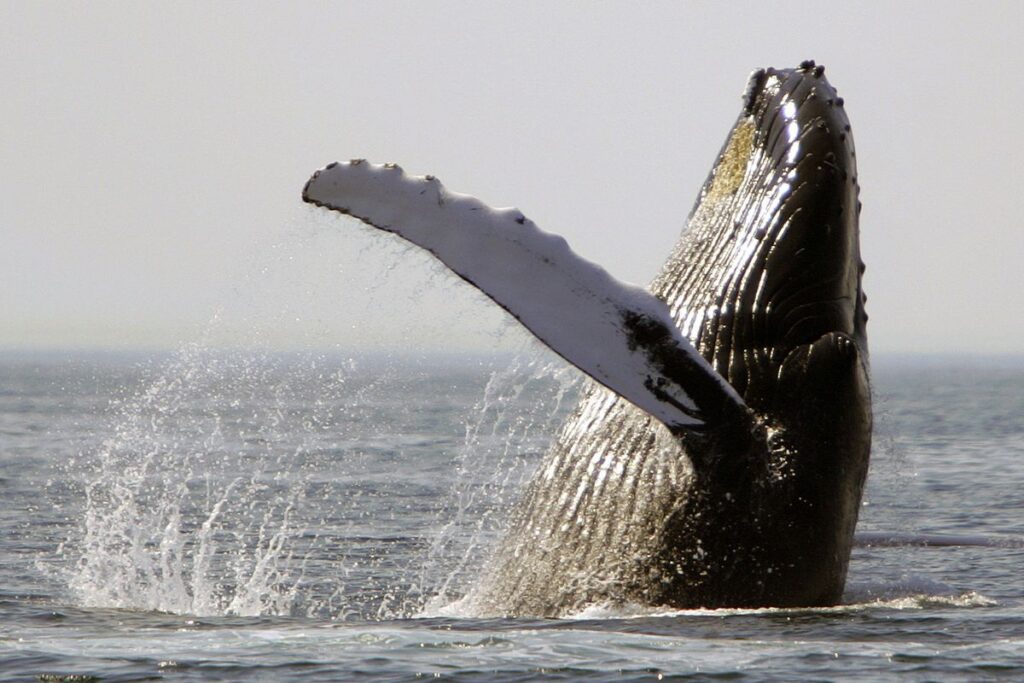
8. Do U.S. Marine Protected Areas Really Safeguard Marine Life?
Though the United States has an extensive network of marine protected areas (MPAs), reports reveal the effectiveness of these areas in safeguarding marine life is questionable. The majority of ocean protection is concentrated in the central Pacific, while coastal ecosystems across the continental U.S. remain largely defenseless due to industrial fishing. Many coastal MPAs permit activities such as bottom trawling, which damages the seafloor and leads to harmful unintended bycatch.
Reports indicate that marine sanctuaries often fail to provide adequate protection, allowing for degradation and decline of resources. Efforts to expand MPAs raise questions about their actual conservation impact and may not effectively address the biodiversity crisis if protections lack strong regulations. Ultimately, the 30 by 30 goal, aimed at conserving 30 percent of land and ocean by 2030, also requires improved design and management of MPAs, according to this piece.
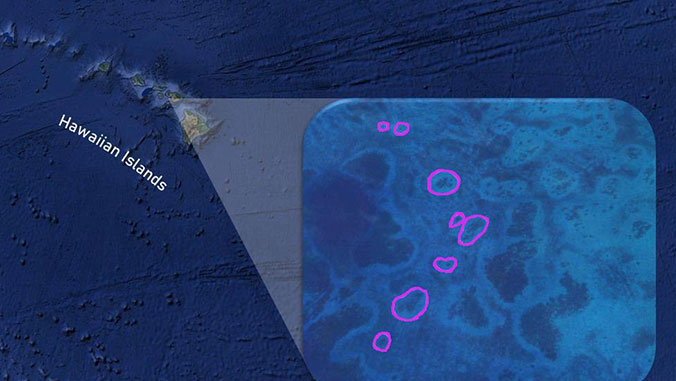
9. New AI Tool Developed at University of Hawaiʻi Streamlines Coral Reef Conservation
Monitoring coral reefs is crucial due to their vulnerability to factors such as overfishing and climate change, but it poses a significant challenge. Researchers at the University of Hawaiʻi at Mānoa have developed an innovative coral reef conservation tool utilizing artificial intelligence (AI) technology. The tool uses deep learning algorithms to identify and measure reef halos, which are ring-like patterns of bare sand surrounding coral patch reefs that may indicate coral reef health.
This AI method allows for accurate, efficient identification on a broader scale compared to traditional methods. This development provides an essential step towards a global-scale reef conservation and monitoring tool to enhance the understanding and management of coral reef ecosystems. The team plans to create a convenient, cost-effective web app allowing conservation practitioners and scientists to monitor reef health using satellite or drone imagery.
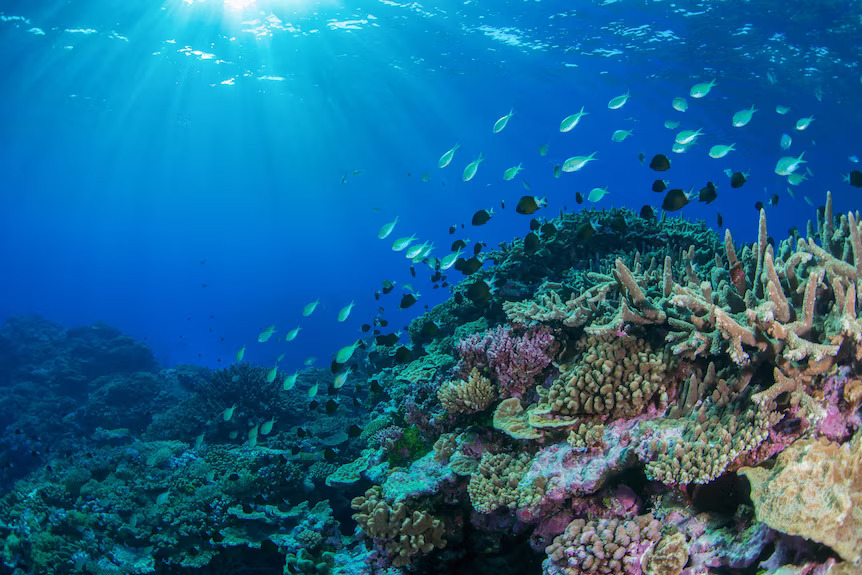
10. Seamap Gives Australians Widespread Access to Sea Floor Research Data
Scientists in Australia have introduced an online mapping tool called Seamap Australia, which provides access to sea floor habitat research from all around the country in one centralized platform. Led by marine analysts from Hobart’s Institute of Marine and Antarctic Studies, Seamap presents various data streams in a visually interactive manner. The tool allows the general public to explore sea floor habitats, view fish behavior, identify vulnerable areas, and assess environmental impacts for potential developments.
This comprehensive tool aims to bridge the gap between researchers and everyday users, making marine research more accessible and facilitating informed decision-making. Additionally, according to a data analyst, Seamap Australia can help identify where to allocate resources for future research efforts. According to Seamap technical lead Dr. Emma Flukes, Seamap is the first tool of its kind to map and consolidate all available marine habitat data from around Australia.
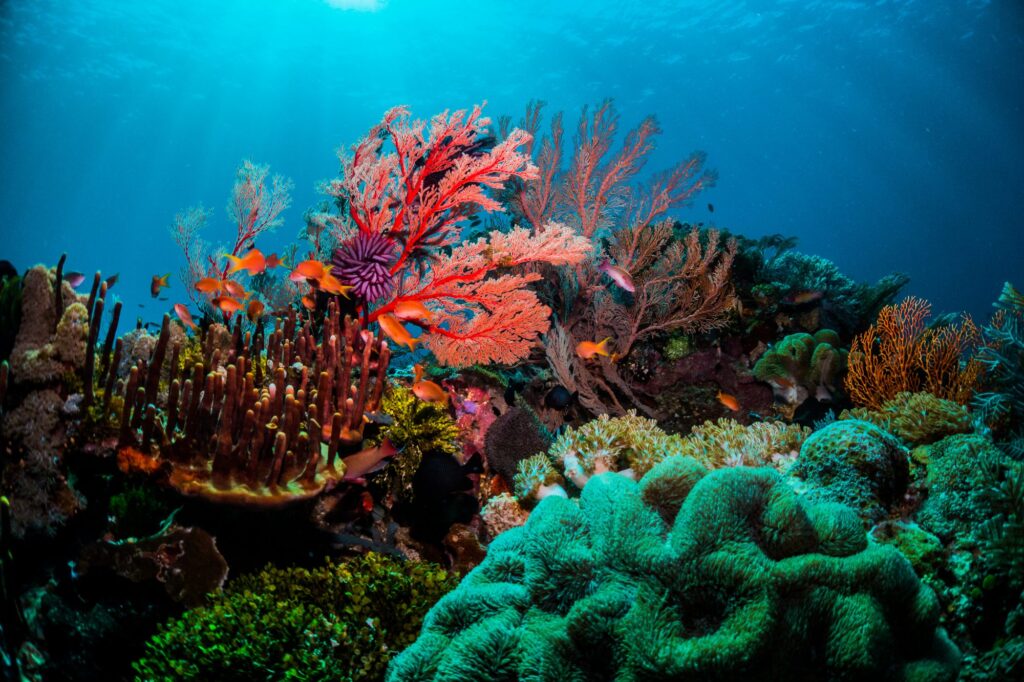
11. New Study: Indo-Pacific Coral Resilience Better Than Atlantic Species
A recent study by Penn State University reveals that Indo-Pacific coral reefs are more resilient to climate change than Atlantic reefs. This depends on the species of symbiotic organisms associated with the corals. Researchers identified two types of symbionts: generalists and specialists. Indo-Pacific corals commonly have generalist symbionts, providing adaptability by associating with various coral species. In contrast, Caribbean corals typically have specialist symbionts, limited to specific coral types.
This flexibility allows Indo-Pacific corals to better withstand environmental stressors. The study highlights the impact of coral bleaching on entire ecosystems. Additionally, it identifies five new species of host-generalist symbionts. These adaptable symbionts could play a crucial role in the survival and productivity of reef-building corals amid global warming. The formal classification of these symbionts aims to improve scientific communication and stimulate further research on coral interactions with these organisms.
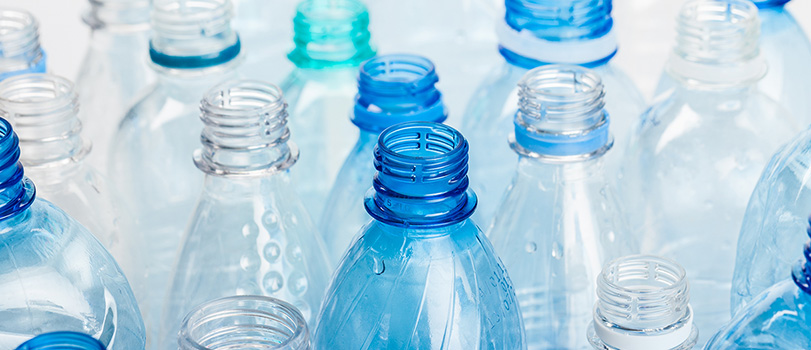
12. European Commission: Decisions for Recycled Content in Single-Use Bottles, Slow
The European Commission (EC) has published a draft implementing decision outlining rules for calculating, verifying, and reporting on recycled plastic content in single-use plastic bottles to align with the EU’s Single-Use Plastics Directive. The directive establishes minimum recycled content requirements for PET and plastic bottles by 2025 and 2030, respectively.
The draft decision, overdue by 16 months, specifies the methodology for calculating the proportion of recycled plastic content in beverage bottles, including the consideration of labels and sleeves. It also sets forth the methodology for determining the weight of plastic parts and recycled plastic in beverage bottles. Member states would have to calculate and report these figures annually. The EC aims to increase the use of recycled material in the EU economy and reduce plastic waste incineration and landfill. Feedback is due by May 30, 2023, with adoption planned for the second quarter of 2023.
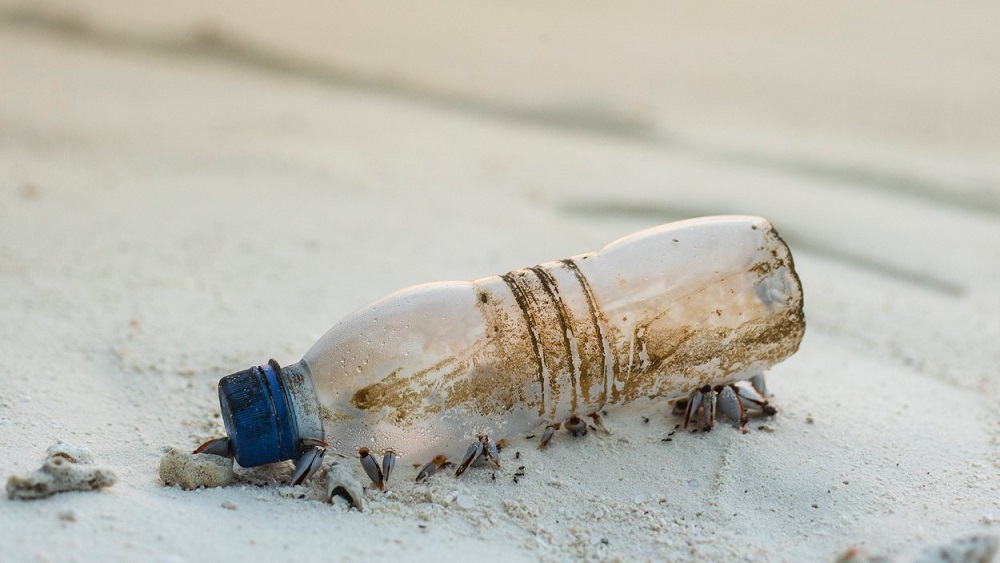
13. Google Single-Use Plastics Challenge
While big corporates have made progress in recent years in eliminating plastic in the form of straws and drink containers, a whole bunch of plastic is still being used in food service and cafeterias every day. To help solve this problem, Google is calling all food companies with sustainable packaging to submit their products to the Google Single-Use Plastics Challenge.
The finalists will have the opportunity to pitch their products to Google and “leading global food operators” to scale them across Google’s U.S. offices. Their effort also goes further by emphasizing food service plastic in all forms, including plastic containers and wrappers which have gotten less attention than plastic bottles, straws, and cutlery. For those interested in applying to the Google Single-Use Plastic Challenge, you’ll need to hurry since the deadline is May 30th.

14. Pinellas Coast Algae Bloom
Parts of the Pinellas Coastline were noted to be brown, and it was discovered that this was due to an algae bloom called trichodesmium, sometimes known as “sea sawdust,” which is a precursor to toxic algae blooms like red tide. The FWC states that these normally appear between May and September and are caused by the Saharan Dust phenomena.
“It flies over in the atmosphere from the Saharan Desert on the African continent, and it just travels in the atmosphere until it ultimately lands in the Gulf of Mexico, then the trichodesmium eats that African dust and creates the nitrogen that fuels the harmful algae,” said J.P. Brooker from Ocean Conservancy. The current silver lining, he says, is that there isn’t a large red tide bloom affecting the Pinellas County coast; nevertheless, conservationists and the FWC will still be watching these blooms constantly.
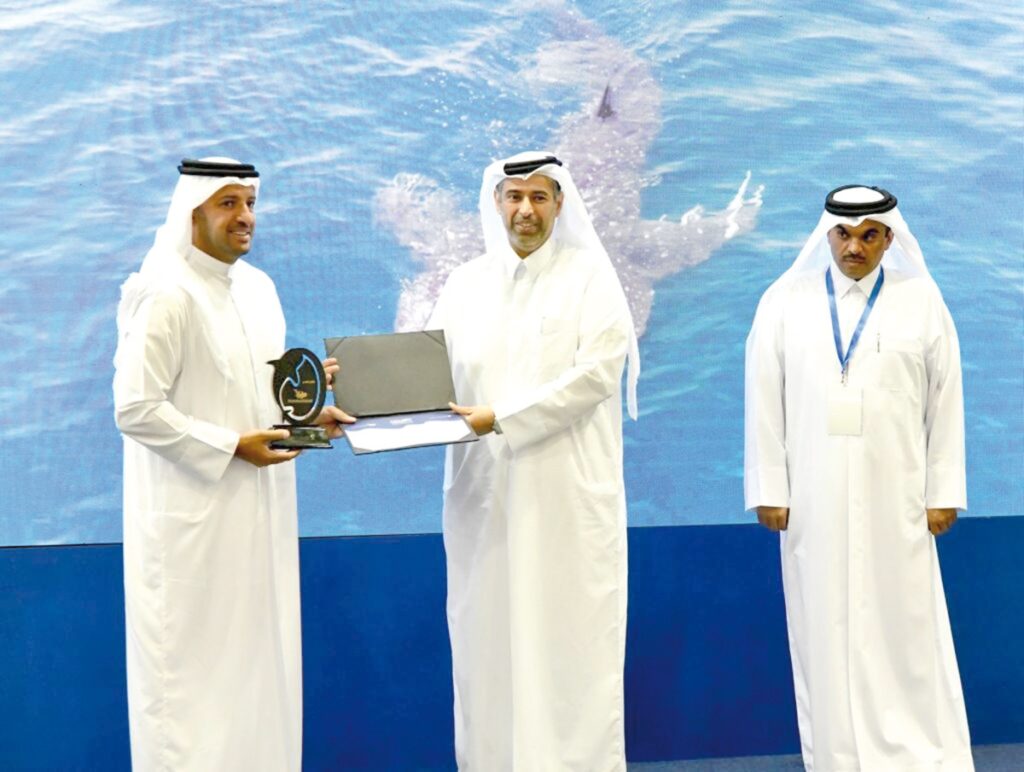
15. Qatar Works to Extend Protected Areas in Their Seas
The two-day Qatar Forum on Whale Shark Conservation 2023 was conducted this week at the Ras Matbakh Aquatic Research Center. The Ministry of Environment and Climate Change (MoECC) arranged it in collaboration with Unesco to discuss how to protect whale sharks. H E Sheikh Dr. Faleh bin Nasser bin Ahmed bin Ali Al Thani, Minister of Environment and Climate Change, stated at the forum’s opening ceremony that Qatar, which has one of the highest concentrations of whale sharks in the world, plans to open a regional office for the whale shark.
The forum, according to the minister, is part of a series of initiatives by Qatar to conserve whale sharks as part of its commitment to safeguarding marine species. In addition, they are also issuing environmental laws, as well as trying to raise the extent of marine reserves to 30% of Qatar’s Exclusive Economic Zone.
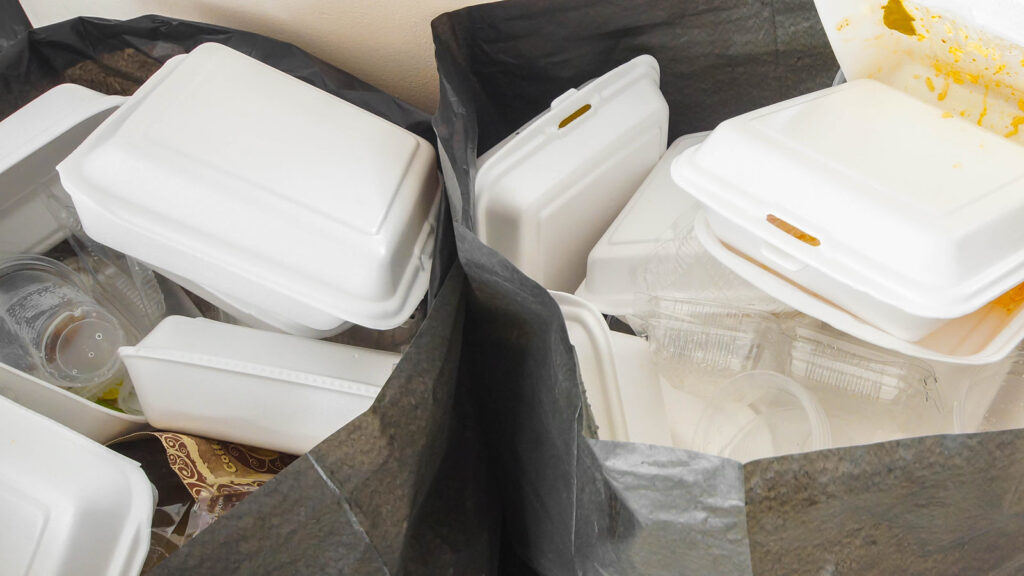
16. Jamaica: Plastic Lunch Box Ban to Take Effect by December
On Thursday, the long-promised ban on plastic lunch boxes was confirmed to take effect on December 21 by the minister without portfolio in the Ministry of Economic Growth and Job Creation Matthew Samuda. He had previously announced that the ban would take effect this year as part of the Government’s bid to ensure greater waste management and safeguard the environment from pollution caused by this harmful material.
In regards to this, it was also found that some business owners have found a way to get around the ban on expanded Styrofoam for use as finished goods in the food and beverage industry by using another plastic solution. “We will close that loophole because it was certainly not intended to be replaced by PET [polyethylene terephthalate],” said Samuda in response. “Recycled, paper-based solutions are what we want for our lunch boxes,” he added.
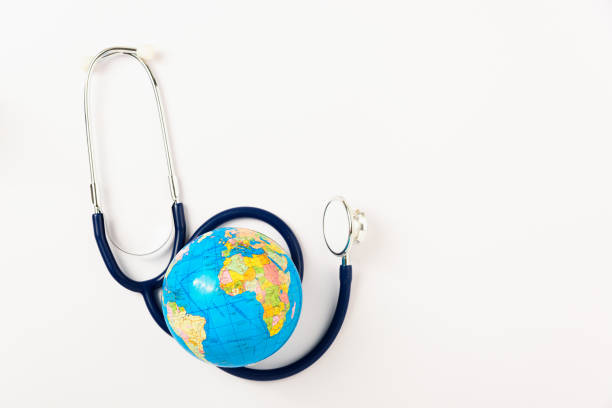
17. World Environment Day: Opportunity for Medical Device Company Participation
World Environment Day, observed on June 5 each year, raises awareness about environmental issues and emphasizes the importance of sustainable practices to safeguard the planet for future generations. Medical devices, while crucial for patient care, can contribute to waste, energy consumption, and pollution. This year’s theme, “Beat Plastic Pollution,” highlights the need to reduce single-use plastics and adopt a circular economy approach.
Plastic materials have long been used in medical devices due to their versatility and cost-effectiveness, but the excessive use of single-use plastics, amplified by the COVID-19 pandemic, has exacerbated plastic pollution. In 2023, medical device companies will be actively making changes and adopting practices to become more environmentally responsible. Key initiatives and approaches include sustainable material selection and design, reduced packaging, extending the product lifecycle, responsible waste management, and energy efficiency.
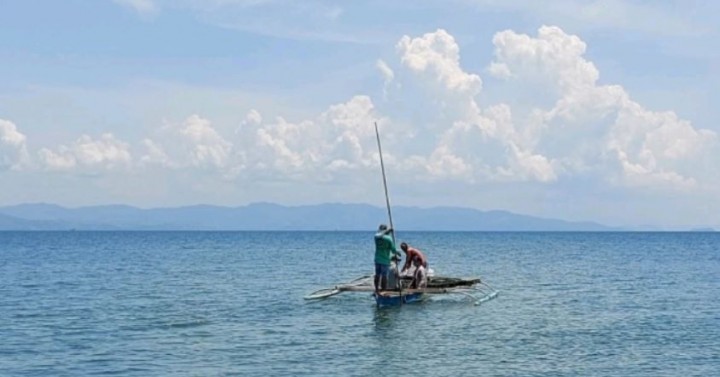
18. Philippines “Blue Crab Capital” Protected with Fishing Regulations
The municipality of E.B. Magalona, considered the “Blue Crab Capital of Negros Occidental,” is strengthening an information campaign about crab catching regulations by enlisting the help of village officials and officers of fisherfolk associations. Reminders are being made against harvesting undersized and gravid blue swimming crabs for the protection and conservation of these marine species. (Undersized crabs refer to those measuring less than 4 inches while gravid crabs are considered pregnant or carrying eggs in clusters on their bellies.)
Mayor Marvin Malacon, chairman of the Negros Occidental Third District Coastal Resources Management and Development Council, met with stakeholders from the town’s nine coastal barangays as well as several crab buyers to remind them of the protection and regulation of catching blue swimming crabs as provided in Municipal Ordinance No. 29, series of 2019.

19. Amcor, Mars and P&G Partner to Stem the Tide of Plastic Pollution in Global South
Amcor, environmental non-profit Delterra, and consumer-products companies Mars and P&G have announced a strategic partnership to scale solutions for a circular plastics economy, jointly committing $6 million over five years. The partnership will focus on countries of the Global South, starting in Indonesia, Argentina, and Brazil, and aim to provide easy access to waste management and recycling systems to 10 million people.
The announcement comes in the lead-up to the second negotiating committee meeting for a Global Plastics Treaty (INC-2), working to develop a globally binding instrument on plastic pollution. The partnership is committed to investing in innovative programs along the full value chain. Upstream, by stemming plastic pollution at source by designing waste out of the system. Downstream, by working on the supply and demand side to capture recyclable and compostable materials and return them to productive use. And innovating material traceability solutions.

20. Ecuador’s “Climate Smart Shrimp” Program Aims to Sustainably “Feed the World”
A new programme that aims to help seafood buyers to support shrimp farmers, reduce carbon emissions and restore mangroves, has been launched by Conservation International and xpertSea today. Aquaculture has been blamed for nearly half of Ecuador’s lost mangrove forests since 1969, raising concerns about the urgent need for habitat restoration. Despite new laws protecting mangroves, progress toward reforestation has been slow and farmers face limited access to capital for improvements, which makes it challenging to invest in regenerative systems.
Climate Smart Shrimp is Conservation International and xpertSea Responsible Shrimp’s response to these challenges. By joining this program, seafood buyers can direct their purchasing power to help farmers get financing for on-farm investments, implement on-farm carbon improvements, and generate direct investment in mangrove restoration. The collaborative effort also delivers verified data on seafood traceability and Scope 3 carbon emissions.
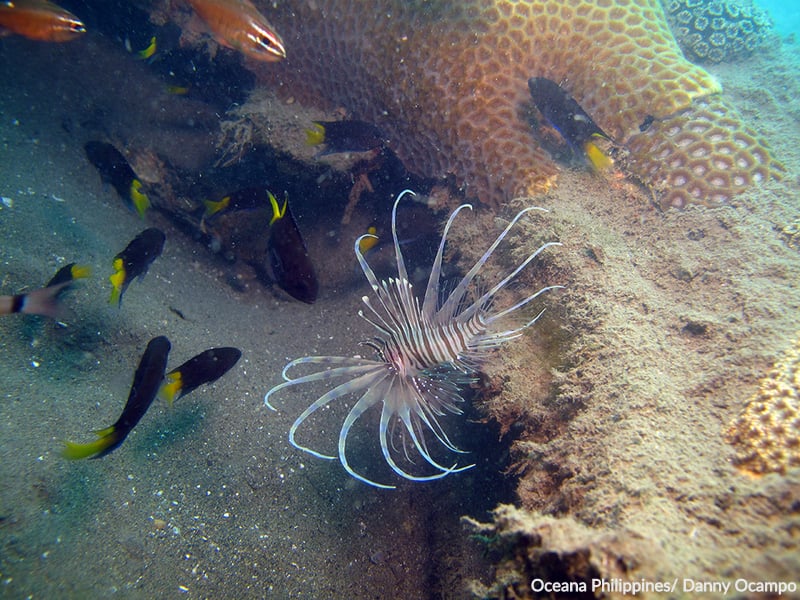
21. Philippine’s Biodiversity Conservation Gets $4.3 Million Boost
In celebration of the International Day for Biological Diversity on May 22, the United States government, through the U.S. Agency for International Development (USAID), awarded P240 million ($4.3 million) in grants to help civil society organizations address the unique climate challenges faced by local communities across the Philippines. Eleven grants, provided under USAID’s Investing in Sustainability and Partnership for Inclusive Growth and Regenerative Ecosystems (INSPIRE) Project, will support efforts to conserve biodiversity, protect wildlife, and implement natural climate solutions.
As an example of how the funds will be used, the Mabuwaya Foundation plans to use the grant to protect the intact forests of the Sierra Madre mountain range in Cagayan by addressing illegal logging and conversion of forest lands for agricultural use. In another example, funds will strengthen community-based initiatives to restore and protect the mangrove forests and other marine ecosystems in Zamboanga Sibugay.
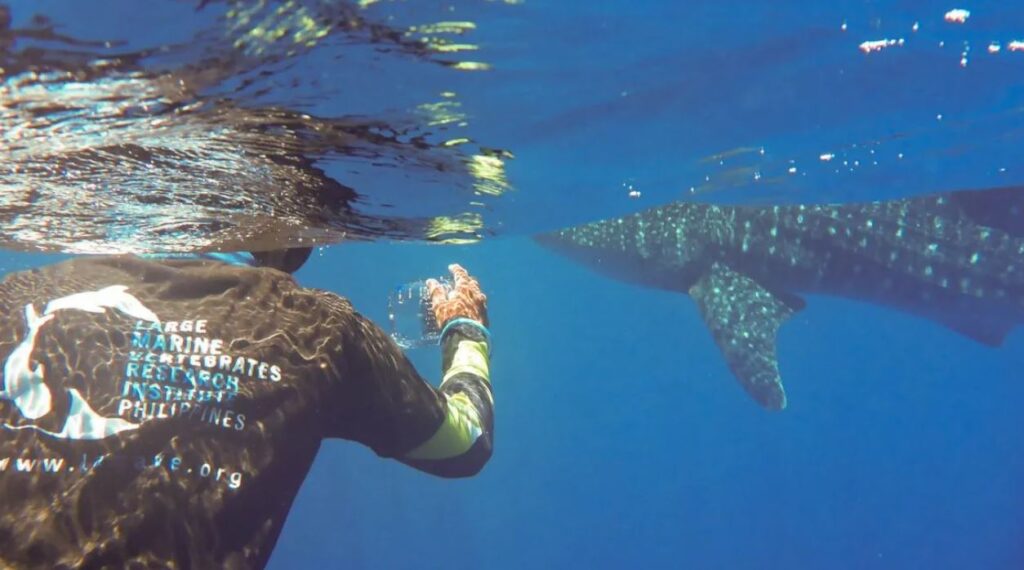
22. New Partnership Seeks to Bolster Maritime Conservation Efforts in Palawan, Philippines
The Palawan Council for Sustainable Development Staff (PCSDS) has partnered with James Cook University (JCU) to drive maritime conservation efforts in Palawan, a series of islands on the western edge of the Philippines.
The partnership falls under the ambit of the Maritime 2.0 Project, which is a landmark initiative supported by the Australian Department of Foreign Affairs and Trade, and this collaboration aims to enhance the role of civil society organizations in the management and preservation of marine resources. In a virtual meeting held on May 15, PCSDS and JCU discussed the logistics, scope, and partnership arrangements for the project.
By leveraging the expertise and resources of both organizations, the collaboration seeks to establish a robust framework for the protection and preservation of the region’s invaluable marine resources.

23. Conservation Bonds Are an Increasingly Attractive Financing Option
Ecuador recently repurchased around US$1.63 billion of its external debt in bonds maturing in 2030, 2035 and 2040 in the largest debt-for-nature swap in the world’s history. Negotiations took two years and the operation concluded on May 9, involving savings of around US$1.1 billion for Ecuador, of which US$450 million will be for protecting marine reserves in the Galapagos archipelago.
The operation advanced despite severe political risk, as President Guillermo Lasso resorted to a constitutional mechanism that allows him to dissolve the National Assembly and call an early election. Often known as blue or green bonds, this type of debt is relatively new. In the future, it may be easier to issue these types of bonds since much of the groundwork has been completed. Perhaps a bond to protect the Amazon could be next.
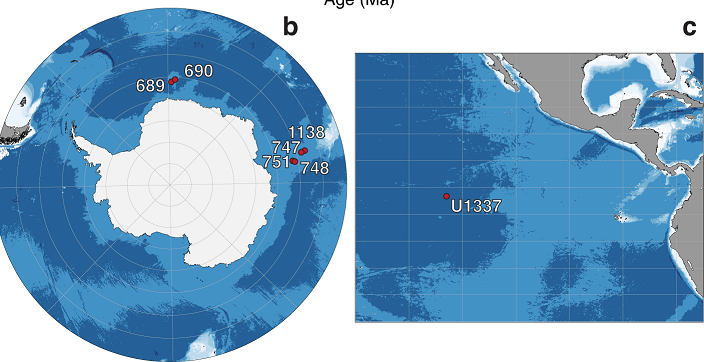
24. Decoupling Population Numbers from Extinction Risk in Marine Plankton Fossil Record
A major premise of ecological neutral theory is that population size is inversely related to extinction risk. In layman’s terms, rare species are more likely to go extinct than common ones. This idea is central to modern biodiversity conservation efforts, which often rely on abundance metrics to partially determine species extinction risk. One way of exploring extinction risk in the fossil record is to examine species longevity from origination to extinction.
This study used the fossil record of Neogene radiolaria to test the relationship between relative abundance and longevity (time from first to last occurrence). The dataset includes abundance histories for 189 polycystine radiolarian species from the Southern Ocean, and 101 species from the tropical Pacific. The study shows that neither maximum nor average relative abundance are significant predictors of longevity in either oceanographic region. Extrinsic factors are likely more important than neutral dynamics in controlling radiolarian extinction.
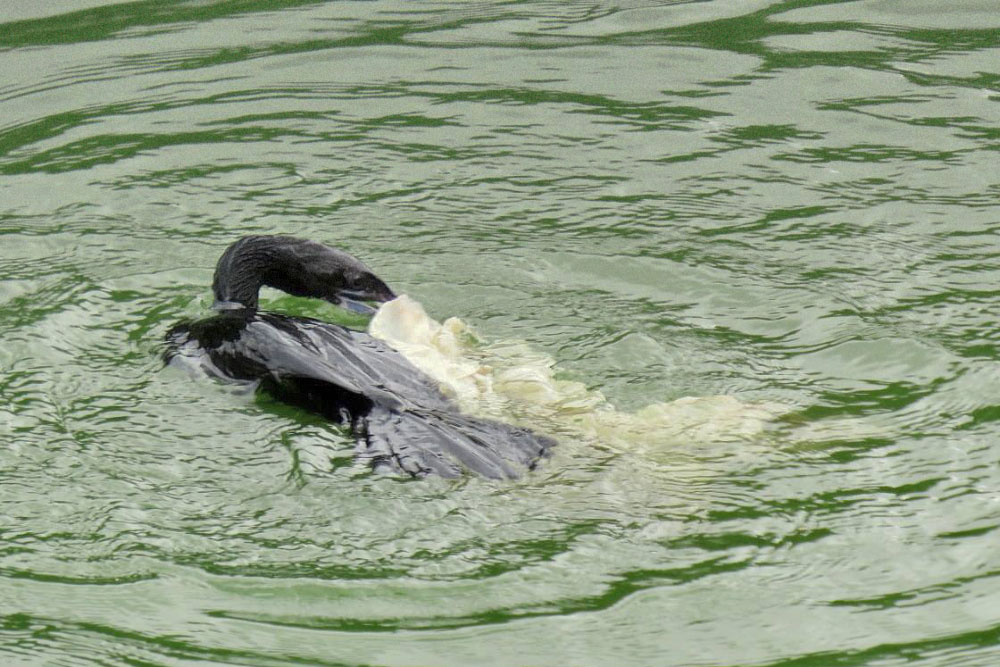
25. Plastics in Air, Food, and Water: A Reckoning Approaches for Smart Businesses
Negotiators will meet in Paris to discuss a global plastics treaty. Governments are aiming to agree on a common approach by the end of next year. Environmental campaigners believe this can be a game-changing step in the fight against plastic pollution. Since WWII, humanity’s dependence on plastics has exploded. The private sector has failed to take responsibility for the unintended damage, and regulation has not kept up.
The result is a plastic waste crisis of exponential proportions. The mass of plastics on our Earth is over double the mass of living animals–and plastic waste is set to treble by 2060. The treaty is a chance to start getting on top of the plastics crisis. If more CEOs join the push, it will give governments confidence that, if they show ambition and can collaborate on scaling up the best solutions, many in industry stand with them.
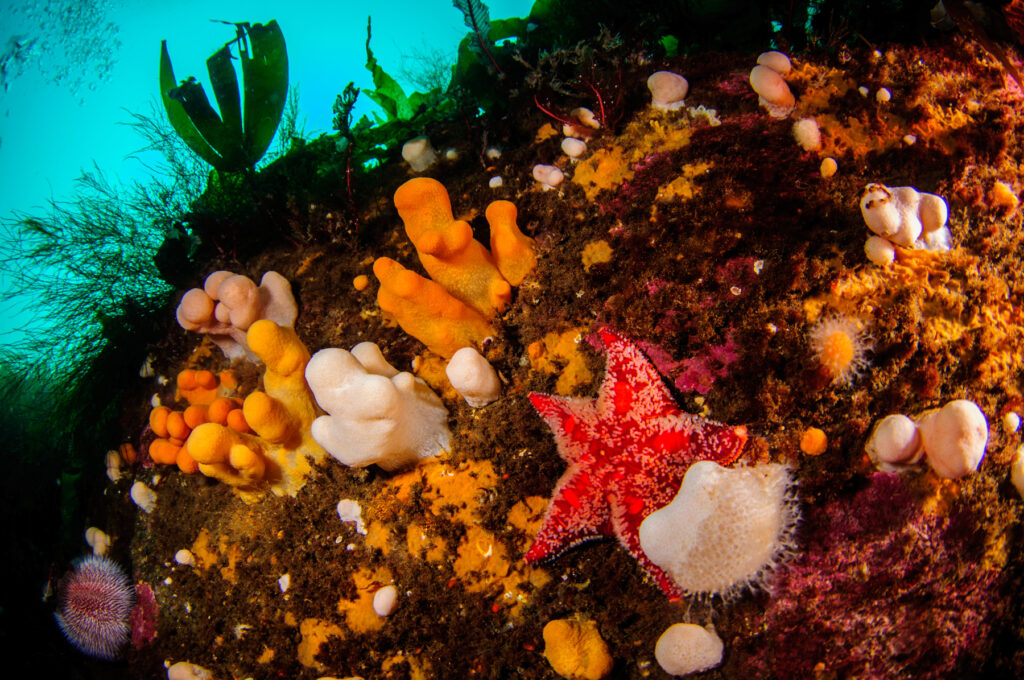
26. European Parliament’s Damning Nature Restoration Stance Ignores Citizen Concerns
The European Parliament’s Committee on Fisheries (PECH) has entirely rejected the Nature Restoration Law (NRL) by a difference of just 1 vote (15 for rejection, 13 against). The NRL is the first EU law to set legally-binding targets to restore nature and a once-in-a-lifetime opportunity to tackle the biodiversity and climate crises.
This directly threatens the European Green Deal’s objectives of setting the EU on a path to a green and just transition. Today’s political shortsightedness puts the future of European fisheries and the health of our marine environment in real danger, with dire consequences for millions of people living and working in Europe. Investing in restoration is our best insurance for resilient food systems and integral to EU efforts to mitigate climate change. Businesses increasingly agree that restoring nature is crucial for their future survival.

27. The First Global Macrogenetic Map of Marine Habitat-Forming Species
Species known as marine habitat-forming species —gorgonians, corals, algae, seaweeds, marine phanerogams, etc.— are organisms that help generate and structure the underwater landscapes. These are natural refuges for other species, and provide biomass and complexity to the seabeds. But these key species in marine ecosystems are currently threatened by climate change and other perturbations derived from human activity.
Now, a study published in the journal Global Ecology and Biogeography warns that even in the marine protected areas (MPAs) the genetic diversity of structural species is not protected, although it is essential for the response and adaptation of populations to changes that alter the natural environment. The conclusions of the work recall the need to include the genetic diversity of populations in biodiversity management and conservation plans on the planet.
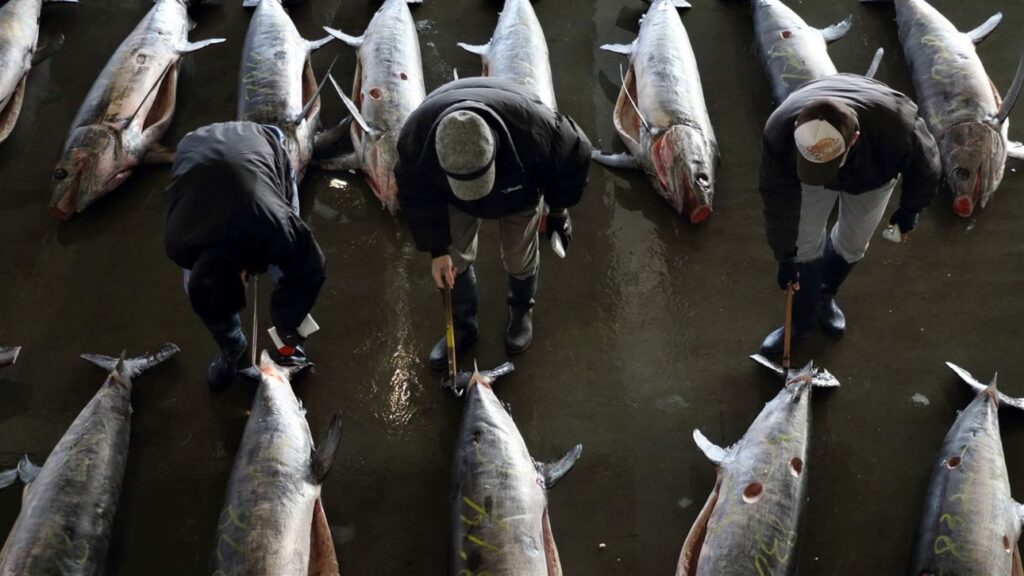
28. Japan Poised to Lead on Fisheries Oversight in Pacific
Managing and tracking the catch and transfer of fish is a huge and daunting task, that falls to governments and regional fishery management organizations (RFMOs). To succeed, they need the right data gathering and fishery monitoring tools, access to current science and knowledge of what’s happening throughout the seafood supply chain. Further, responsible fisheries management is key to the health of the ocean and fish populations, and to coastal communities and their economies.
Fisheries in the Pacific Ocean are the source of most of the world’s tuna supply and are worth billions of dollars in tuna sales annually. Japan—where the fishing and seafood sectors are both culturally and economically vital—has emerged as a regional leader in fisheries management. This includes a willingness to adopt newer approaches, such as electronic monitoring (EM), which includes computers and cameras that record activity and relay information to central databases.




